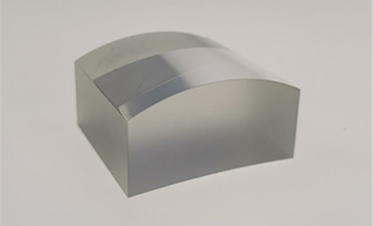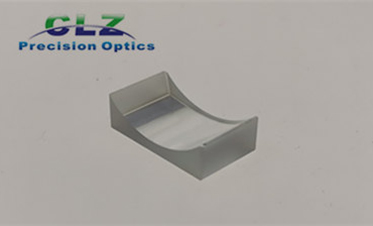Difference Between Positive Cylindrical and Negative Cylindrical Lenses
Apr. 11, 2023
Positive cylindrical lenses and negative cylindrical lenses are two types of lenses that have different optical properties and are used for different purposes. While both lenses are cylindrical in shape, their curvature and resulting effects on light differ significantly.
Custom Plano-Convex Cylindrical Lenses
UV fused silica Plano-concave cylindrical lenses
Differences
In this response, we will explore the key differences between positive cylindrical lenses and negative cylindrical lenses in detail.
Curvature and Optical Power:
Positive cylindrical lenses have a convex curvature along one axis and a planar or slightly concave curvature along the perpendicular axis. The convex curvature focuses light in one direction and spreads it in the other, resulting in a positive optical power along the axis of curvature.
On the other hand, negative cylindrical lenses have a concave curvature along one axis and a planar or slightly convex curvature along the perpendicular axis. The concave curvature spreads light in one direction and focuses it in the other, resulting in a negative optical power along the axis of curvature.
Focal Length and Focusing Behavior:
Positive cylindrical lenses have a positive focal length along the axis of curvature. They converge light along the axis of curvature, bringing parallel light rays to a focal point. These lenses are commonly used to focus or collimate light in one dimension while allowing it to spread in the other dimension.
In contrast, negative cylindrical lenses have a negative focal length along the axis of curvature. They diverge light along the axis of curvature, causing parallel light rays to appear to originate from a virtual focal point. Negative cylindrical lenses are typically used to spread or diverge light in one dimension while maintaining focus in the other dimension.
Astigmatism Correction:
Positive cylindrical lenses can be used to correct astigmatism, an optical condition where the eye's focusing power varies in different meridians. By strategically placing a positive cylindrical lens in front of the eye, the curvature of the lens compensates for the uneven focusing power, resulting in a clearer image for the viewer.
Negative cylindrical lenses, on the other hand, can exacerbate astigmatism since their concave curvature further spreads the light in the meridian with weaker focusing power. Therefore, negative cylindrical lenses are not suitable for astigmatism correction and are typically used in applications where astigmatism is not a concern.
Applications:
Positive cylindrical lenses find various applications in optics and imaging systems. They are commonly used in laser systems to shape and focus laser beams into a line or a specific pattern. Positive cylindrical lenses are also utilized in barcode scanners, spectacles for astigmatism correction, optical sensors, and in the field of microscopy to enhance resolution in one dimension.
Negative cylindrical lenses are primarily used in beam expansion applications, where they spread or diverge a laser beam in one dimension while maintaining focus in the other dimension. This makes them useful for applications such as laser beam shaping, collimation, and in certain optical systems where beam homogenization is required.
Combinations and Corrective Measures:
Positive and negative cylindrical lenses can be combined to create cylindrical lens pairs, where the positive and negative lenses are oriented in such a way that their combined effect cancels out, resulting in no net power in either direction. These combinations are commonly used in ophthalmology to correct astigmatism in the eye, where a positive cylindrical lens is combined with a negative cylindrical lens to achieve a net zero power in one meridian.
Additionally, cylindrical lenses, both positive and negative, may incorporate additional elements such as spherical lenses to correct for other optical aberrations like spherical aberration, coma, or distortion.
In conclusion, positive cylindrical lenses and negative cylindrical lenses have distinct characteristics and optical behaviors. Positive cylindrical lenses focus light in one dimension and spread it in the other, while negative cylindrical lenses diverge light in one dimension and focus it in the other. If you want to know more information about positive cylindrical lenses and negative cylindrical lenses, please contact us. We will provide professional answers.




















